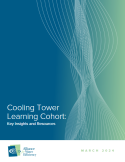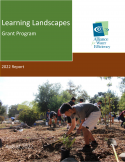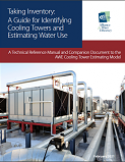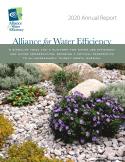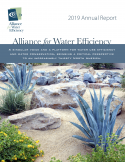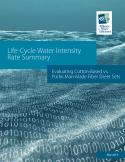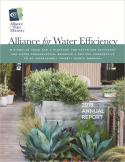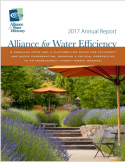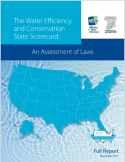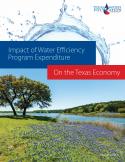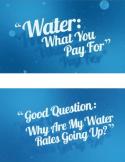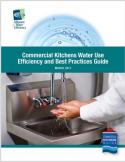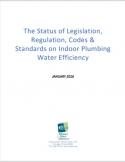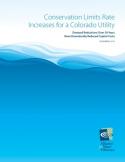AWE recently wrapped up a learning cohort focused on Cooling Tower Efficiency alongside 15 of our members. The learning cohort consisted of utilities that met seven times from January 2023 through January 2024 to work through the cooling technology research and resources, share experiences and information, and learn from each other and from invited guests with relevant subject matter expertise.
Our Work
The Alliance for Water Efficiency (AWE) partners with our members and other organizations to produce the research, tools, resources, and information they need to advance water efficiency in their communities. Our work has helped water professionals seize new opportunities, uncover challenges, and break down barriers to achieve sustainable water use. To get involved and help define the work we do, join the AWE network today.
2024
2023
In 2022 AWE collaborated with Regional Water Authority (RWA) to prepare a report titled "Water and Energy Savings Estimates for CII Landscapes Upgrade Projects". RWA is a joint powers authority representing water providers and affiliates in the Sacramento region of California.
2022
AWE and The Scotts Miracle-Gro Foundation are excited to share a report detailing projects funded by the 2021 Learning Landscape Grants, as well as two projects from the 2020 program that were recently completed. The AWE Learning Landscape Grant Program, funded by the Scotts Miracle-Gro Foundation, helps support building or improving educational outdoor spaces at schools, botanical gardens, and community locations that allow school-age children to experience hands-on learning about water efficiency in outdoor landscapes.
2021
2021 was another challenging year for the Alliance for Water Efficiency (AWE) and our partners as drought – both prolonged and seasonal - continued across much of North America, with the prospect of increasing water supply instability because of climate change. At the same time, political divisions strained the ties that bind our nation together and threatened to prevent action on a host of pressing challenges, including the growing water crisis.
Learn more about AWE's eventful 2021 in the full report.
The Alliance for Water Efficiency’s Cooling Technologies Study was initiated by the AWE Water Efficiency Research Committee after it identified cooling tower water efficiency as an area of needed research. The project began in early 2020 and was completed in the Fall of 2022. AWE worked with the Pacific Northwest National Lab and Maureen Erbeznik & Associates to develop tools and resources to help AWE members create, or optimize, cooling tower water efficiency programs.
2020
Despite the challenging circumstances of 2020, the Alliance for Water Efficiency (AWE) persevered to provide research, member support, and policy advocacy that advanced sustainable water use across North America. As the world abruptly shifted to remote working, we collaborated with our partners to exchange ideas and strategies for navigating the new reality.
Learn more about AWE's eventful 2020 in the full report.
2019
2019 was a year of production. AWE released studies, reports, manuals, handbooks, user guides, and webinars.
We successfully mobilized our community to help ensure a place for EPA’s WaterSense program in the FY2020 national budget.
We collaborated with Plumbing Manufacturers International (PMI) to establish strict guidelines for installing multiple showerheads in a single stall, thus closing a significant loophole in codes and ensuring effective water efficiency standards.
There is great interest in evaluating products and processes for their contribution to a more sustainable future and particularly as they might contribute to overall water efficiency.
2018
2018 has been a fabulous year for us at the Alliance for Water Efficiency (AWE). Our years of hard work are bearing fruit in building partnerships and highlighting our ongoing efforts to provide cutting-edge research and technical assistance. Our members tell us that we are making a difference...Making a difference is why we exist. It is gratifying to see our efforts working in so many geographies and with so many partners.
2017
2017 was a landmark year for us at AWE. We completed a year-long process of negotiating, creating legal frameworks, and strategic planning to lay the groundwork for the California Water Efficiency Partnership to become the Alliance for Water Efficiency’s first-ever state chapter. There is great synergy in the work of both organizations, and we will be stronger by having an explicit and cooperative platform for working together.
The Alliance for Water Efficiency (AWE) and the Environmental Law Institute (ELI) have released a five-year update to the 2012 Water Efficiency and Conservation State Scorecard: An Assessment of Laws and Policies. As with the 2012 State Scorecard, the 2017 update reviewed, scored, graded states for laws supporting water conservation and efficiency. In addition, the 2017 report added a new component for climate resiliency planning and performed a parallel evaluation, scoring, and grading process.
If you read the economic projections from the Dallas Fed or the Annual Economic Outlook from Texas A&M, the focus will be on the energy sector rebound from low oil prices, and manufacturing jobs, and housing starts. But water is behind all of those jobs — whether for oil exploration and production, steam electric generation or cooling for manufacturing, or the growing appetite for water in new homes and neighborhoods. And how much water Texas has — and will continue to have — shapes our economic growth.
The Alliance for Water Efficiency’s (AWE) Water: What You Pay For video is an animated video that seeks to communicate the value of water service, by explaining why safe drinking water has a cost.
This short video explains the least customers should know about the water that they not only love, but need to survive! It describes the water service a typical residential water bill covers, and the costs of delivering a consistent, reliable flow of safe and affordable drinking water to faucets.
AWE’s Commercial Kitchens Water Use Efficiency and Best Practices Guide will help improve water efficiency in commercial kitchen operations. Unlike other commercial efficiency resources which are designed for planners and utility staff, this guide is specifically designed for members of the commercial kitchens, food service, and hospitality industries. It covers day-to-day best practices, case study summaries, and strategies for efficient management of the most common high-use equipment.
2016
On Indoor Plumbing Water Efficiency
This paper advocates for the incorporation of higher minimum performance and efficiency requirements for indoor plumbing into legislative, regulatory, and codes and standards initiatives.
2013
An article that presents an analysis of water use trends and avoided costs.
There is a commonly held belief in the water industry that declining per capita usage due to water conservation is forcing rate increases to compensate for fewer units of volume billed. But the rate increases necessitated by conservation are actually much smaller than the rate increases that would be necessary to account for population growth in the absence of conservation.






